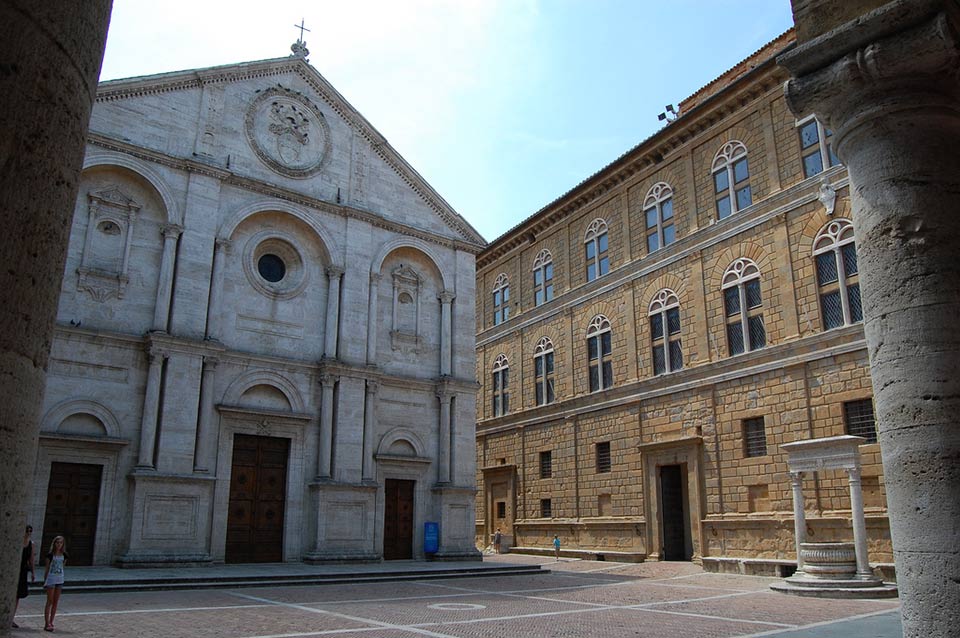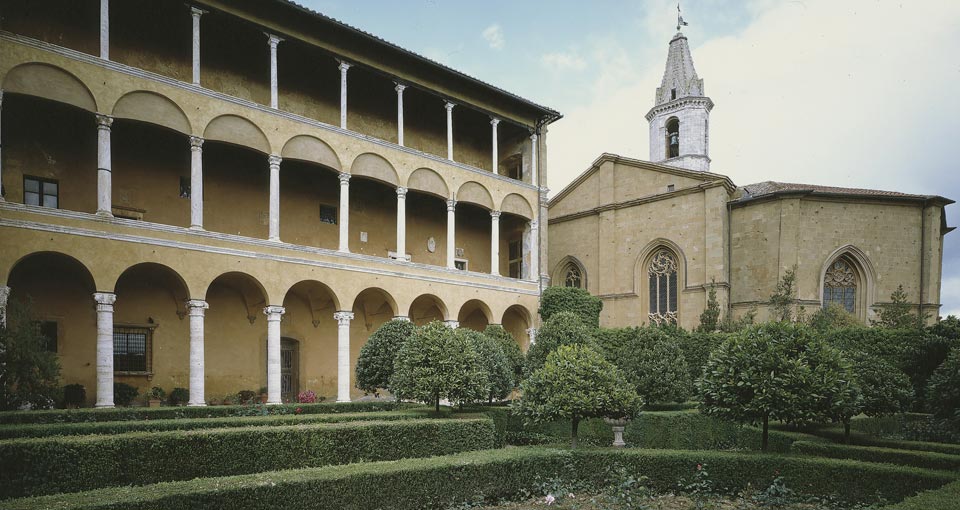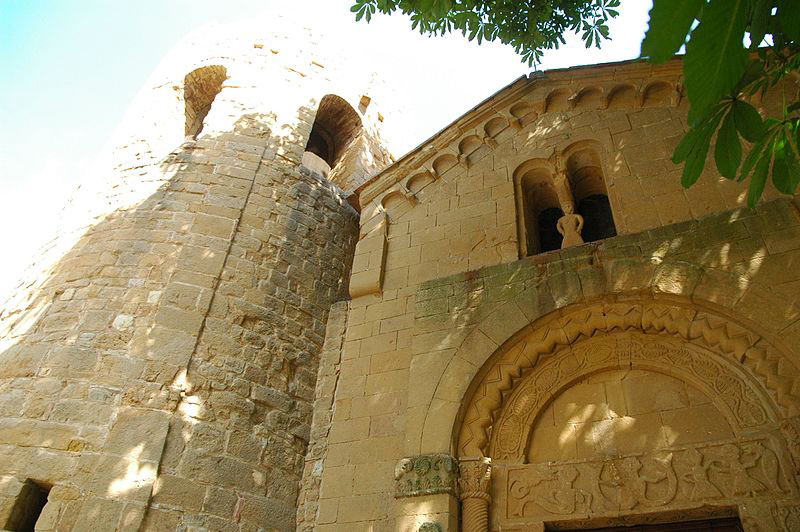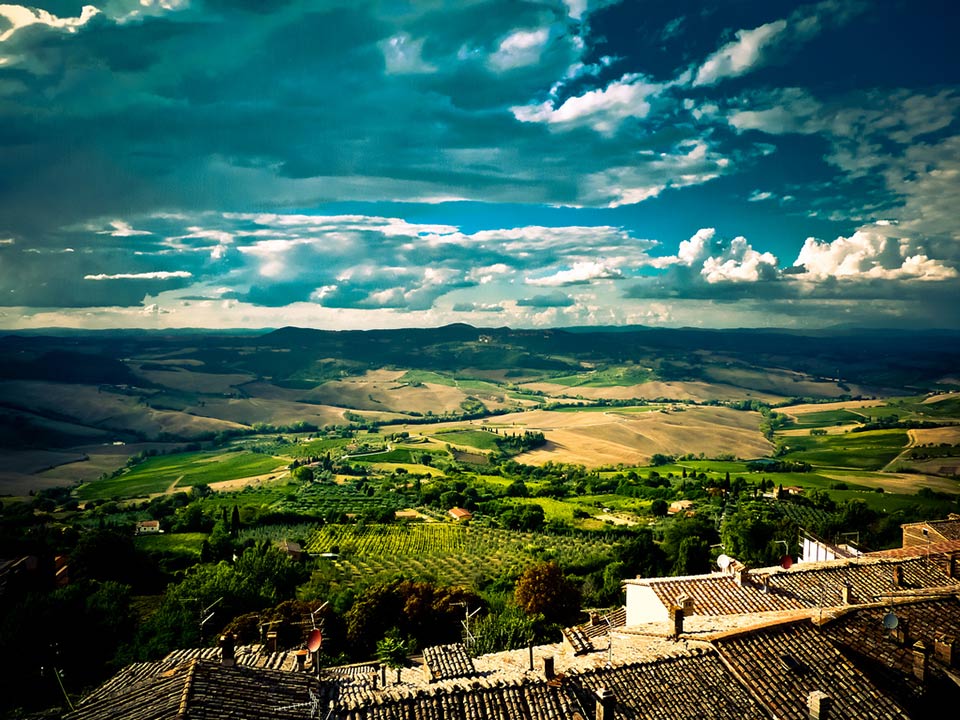What to see in Pienza, the ideal Renaissance town
2 August 2017
Have you ever wondered if the Ideal Town exists? According to many architects and urbanists of the XV century, cities had to respond to precise philosophical, scientific and rational criteria, realizing squares, palaces and fortresses with harmonious proportions, inserted in an urban context designed to enhance each single architectural element.
The history of Pienza is a model in this sense, because this hamlet it’s also known as the Ideal Town and was therefore included by UNESCO among the World Heritage Sites.
We suggest you an itinerary devoted to the attractions that have made Pienza a popular destination, a place that you can visit in just one day, easy to reach from Montepulciano, as it is only 14 km far.
Pienza, the town named after a Pope

Piazza Pio II Pienza, Credits: Maurizio Abbiateci https://flic.kr/p/avrWFF
First of all, it’s important to know that the name of this hamlet was Corsignano until 1462, when Pope Pius II, born Silvio Enea Piccolomini in Corsignano in 1405, visited the town and established its destiny.
The Pope found a very deteriorated hamlet and, so he wanted the town rebuilt as an ideal of Renaissance, entrusting the project to architect Bernardo Rossellino, who in four years succeeded in building a harmoniously-shaped city, a true work of art.
Therefore, Pienza derives its name from Pope Pius II, who died prematurely in 1464, failing in time to commission other works.
The visit of the hamlet begins just from Piazza Pius II, the center of Pienza, where are located the buildings symbol of the Renaissance ideal: the Duomo, named after Santa Maria Assunta, a church characterized by stylistic features which recall the Gothic Franciscan churches, harmonized with the Renaissance structure of the building; the Palazzo Comunale (Town Hall), originally the residence of the Priors, whose facade inside the porch is adorned by the coat of arms of the Podestà that inhabited them.
Inside the Sala del Consiglio you can admire a fresco of the Siena School dating back to XV century, depicting the Madonna with Child and the patron saints of Pienza (San Vito, San Modesto and San Matteo); the Palazzo Vescovile, also known as Palazzo Borgia, is located on the right of the square and houses the Diocesan Museum, which hosts sacred furnishings, tapestries, sculptures and altar-pieces; Palazzo Piccolomini, next to the Duomo, completes the sublime beauty of the square, due to the extraordinary internal roof garden and the loggia overlooking the entire Val d’Orcia and Mount Amiata.
We recommend spending some time visiting the palace to deepen the history of Pienza; on the ground floor there is a permanent exhibition that shows the architectural structure of the palace explaining the project; on the first floor you can visit the secret rooms, furnished with the elegant period furniture remained unchanged over time.
The square-shaped palace is probably the closest work to Pope Pius II’s ideas and has been designed as a summer residence, now became a must-see for tourists. Here, in fact, you can visit the first roof garden designed during the Renaissance!
Art and nature are indissolubly linked in this quiet corner, framed by flowerbeds and a fountain decorated with fruit garlands, a small paradise inside a XV century palace.
For information about opening hours: www.palazzopiccolominipienza.it.

Palazzo Piccolomini Credits: www.palazzopiccolominipienza.it
What to eat in Pienza
The typical Pienza’s specialty is cacio, a kind of pecorino cheese that you will find in different varieties (delicate, spicy and seasoned) in the restaurants menu or as an ideal combination with local cured meats and wines.
To know how this cheese is born and what are its main characteristics you can join a guided tour of a dairy, including a tasting of Pienza’s cacio at the end of the tour.
One of the dairies that offer this opportunity is La Vecchia Bottega, located in Poggio Colombo 40, half-way between Pienza and Montepulciano.
This cheese is considered so important by the inhabitants to dedicate even a competition: Palio del Cacio a Fuso, scheduled in the first week of September in the main square of the town.
In other words, a wooden spindle is placed at the center of the square and the participants of the six contrade have three chances to roll the cacio as close to the spindle and win the Palio as drawn by local artists.
Pieve di Corsignano

Pieve di Corsignano Credits: Fabio Poggi [CC BY 3.0 (http://creativecommons.org/licenses/by/3.0)], via Wikimedia Commons
We invite you to notice a small bas-relief carved on one of the columns of the church, depicting the snake Regolo, a goddess known by the populations of the Tuscan Apennines. It is said that this snake could hypnotize anyone who met him but was not considered necessarily evil.
Inside the Pieve there is the baptismal font in which the Popes Pius II and Pius III were baptized, while in the basements there is the crypt that originally probably housed a relic.
“Pienza, born from a thought of love and from a dream of beauty” is the definition given by Giovanni Pascoli to express the uniqueness of this town, to visit following this brief itinerary to appreciate it to the utmost.

Pienza paesaggio Credits: Shark Attacks https://flic.kr/p/8MPu3x
Preview photo Credits: viaggiandointoscana.it/siena/pienza/.


